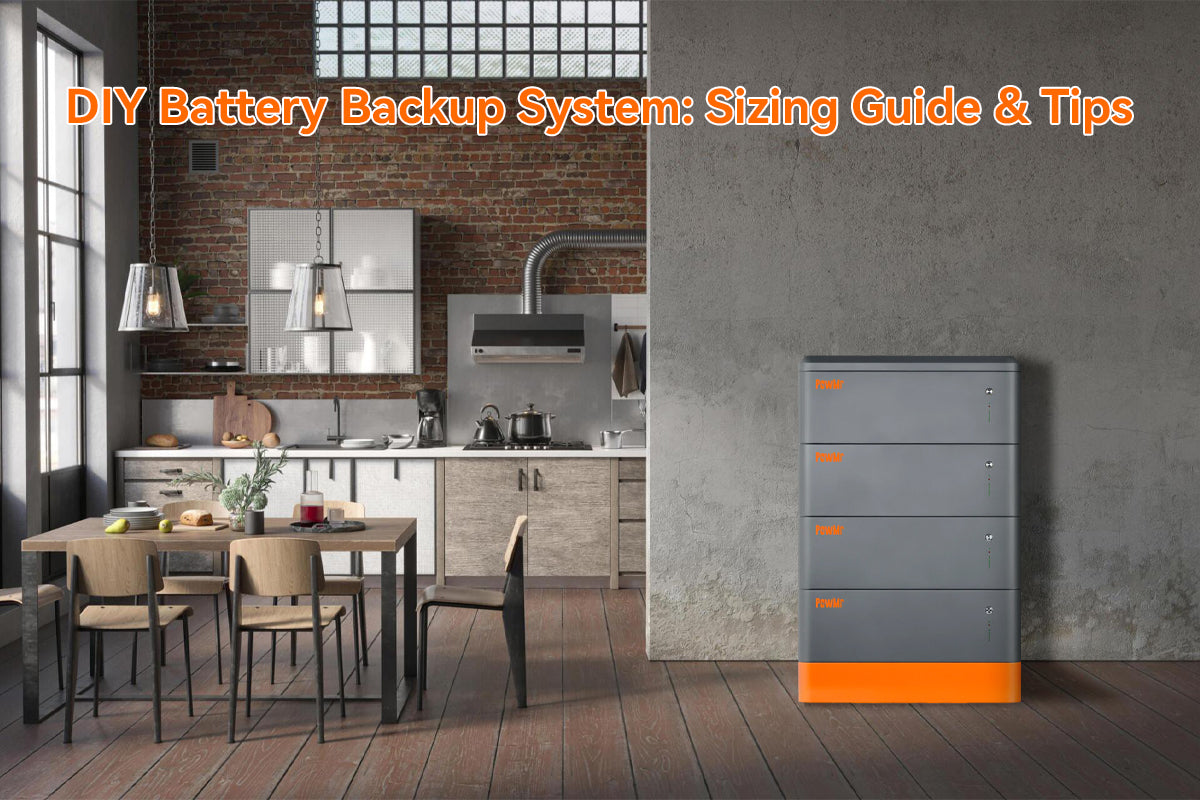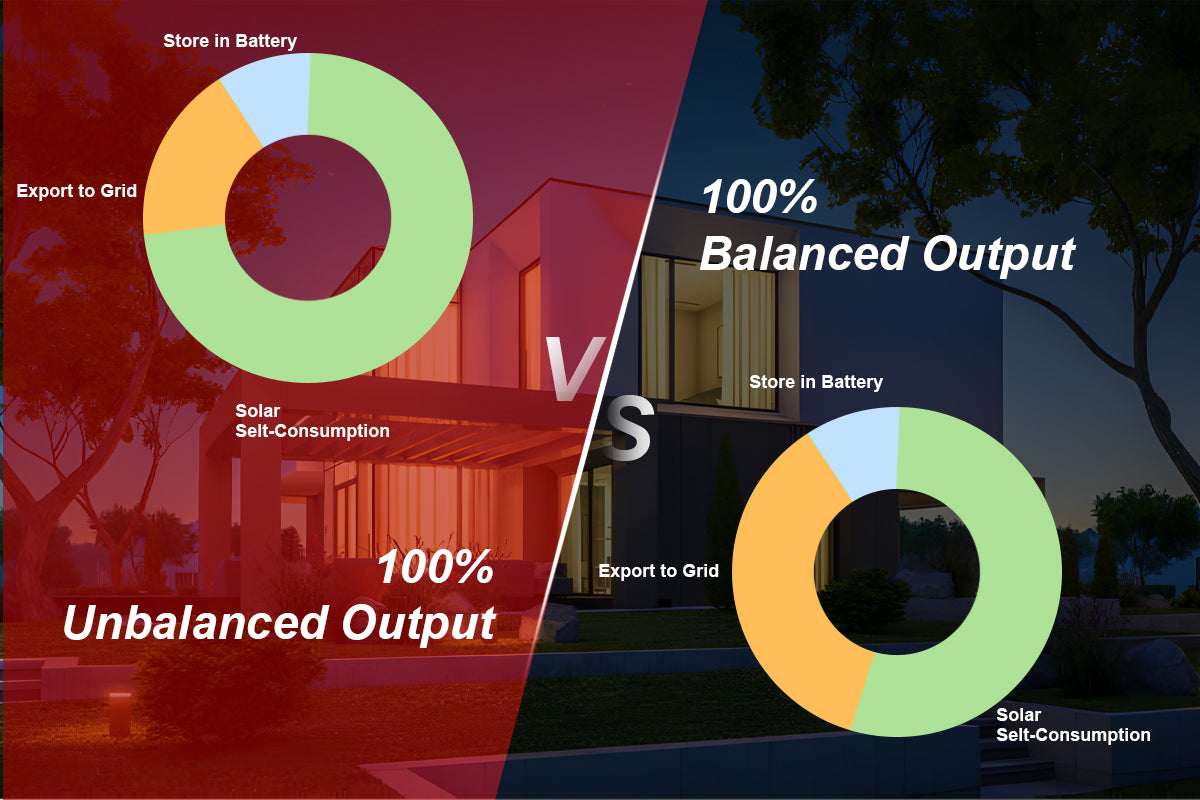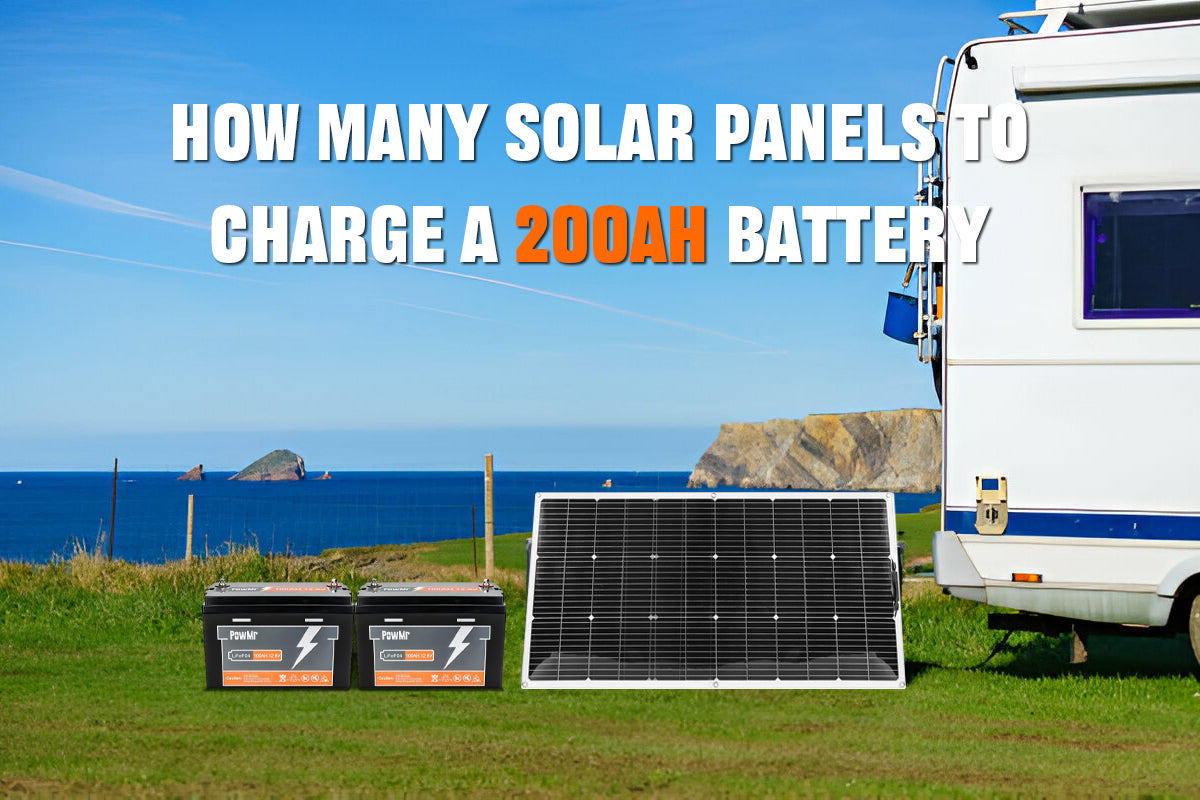ในโลกที่การขัดข้องของไฟฟ้าสามารถรบกวนชีวิตประจำวัน การมีระบบสำรองที่เชื่อถือได้สำหรับบ้านของคุณจึงเป็นสิ่งจำเป็น เครื่องกำเนิดไฟฟ้าจากเชื้อเพลิงฟอสซิลแบบดั้งเดิมอาจให้การบรรเทาชั่วคราว แต่ก็มีข้อเสียเช่นมลพิษจากเสียง การปล่อยก๊าซ และค่าใช้จ่ายในการเติมเชื้อเพลิงที่ต่อเนื่อง โชคดีที่มีทางออกที่เป็นมิตรกับสิ่งแวดล้อมและยั่งยืนมากขึ้น: ระบบสำรองแบตเตอรี่ DIY.
บล็อกนี้เจาะลึกถึงความซับซ้อนของการสร้างระบบแบตเตอรี่สำรองสำหรับบ้านของคุณเอง ตั้งแต่ การเลือกส่วนประกอบที่เหมาะสม ไปจนถึงการให้คำแนะนำเกี่ยวกับ การหลีกเลี่ยงข้อผิดพลาด และ การเพิ่มมูลค่าของระบบ เราจะนำคุณผ่านทุกขั้นตอน ร่วมกับเราในการสำรวจวิธีการสร้างโซลูชันพลังงานที่แข็งแกร่งและเป็นมิตรกับสิ่งแวดล้อม เพื่อความปลอดภัยและความสะดวกสบายของครอบครัวคุณในช่วงไฟดับ.
ในการสร้างระบบสำรองแบตเตอรี่ คุณจะต้องมีส่วนประกอบที่จำเป็น เช่น แบตเตอรี่, อินเวอร์เตอร์, เครื่องชาร์จแบตเตอรี่, สายไฟ และอุปกรณ์ในบ้านที่เข้ากันได้ การเลือกแต่ละส่วนประกอบ ประเภท และขนาดขึ้นอยู่กับความต้องการเฉพาะของคุณและ ข้อกำหนดของอุปกรณ์ ที่คุณตั้งใจจะจ่ายไฟ.
ด้านล่างนี้ เราจะให้ภาพรวมเกี่ยวกับแนวทางโดยรวมในการออกแบบระบบแบตเตอรี่สำรองที่บ้านและ ข้อพิจารณาสำคัญ ที่เกี่ยวข้อง.
ขั้นตอนที่ 1 - กำหนดการใช้พลังงานของคุณ
ก่อนที่จะลงลึกในรายละเอียดของแต่ละส่วน สิ่งสำคัญคือต้องประเมินการใช้พลังงานของคุณอย่างถูกต้อง.
พิจารณา1 - ประมาณระยะเวลา
พิจารณาความยาวเฉลี่ยของการขัดข้องของไฟฟ้าในพื้นที่ของคุณเพื่อประเมินระยะเวลาที่แบตเตอรี่สำรองของคุณควรจะรองรับครัวเรือนของคุณ.
การพิจารณา2 - ประเมินความคุ้มครองที่อยู่อาศัย
กำหนดว่าคุณต้องการระบบ แบตเตอรี่สำรองทั้งบ้าน หรือมีความตั้งใจที่จะจ่ายไฟให้กับโหลดที่สำคัญเฉพาะในช่วงฉุกเฉิน หากการขัดข้องของไฟฟ้าเกิดขึ้นเพียงชั่วคราว คุณอาจต้องคำนวณเฉพาะอุปกรณ์ที่จำเป็นซึ่งต้องการแหล่งจ่ายไฟที่ไม่หยุดชะงักเท่านั้น.
อย่างไรก็ตาม สำหรับการขัดข้องที่ยาวนานกว่าหรือเมื่อมีอุปกรณ์หลายชิ้นที่ต้องจ่ายไฟ ความจุแบตเตอรี่และกำลังของอินเวอร์เตอร์ที่ต้องการจะต้องมากขึ้น
การพิจารณา3 - รายการการจัดอันดับพลังงานของเครื่องใช้ไฟฟ้า
ดังนั้น ให้ทำ รายการที่ครอบคลุม ของกำลังเริ่มต้นและกำลังที่ระบุของอุปกรณ์ที่คุณต้องการจ่ายไฟในระหว่างที่ไฟฟ้าดับ.
กำลังไฟฟ้าที่ระบุ คือการใช้พลังงานอย่างต่อเนื่องของอุปกรณ์ภายใต้สภาวะมาตรฐาน ซึ่งจำเป็นสำหรับการประเมินความต้องการพลังงานโดยรวม.
พลังงานเริ่มต้น/พลังงานกระชาก สะท้อนถึงพลังงานเริ่มต้นที่อุปกรณ์ต้องการเพื่อเริ่มทำงาน ซึ่งมีความสำคัญในการป้องกันการโหลดเกิน โดยเฉพาะกับ โหลดเหนี่ยวนำ เช่น มอเตอร์.
ทั้งสองมาตรวัดมีความสำคัญในการกำหนดขนาดของระบบแบตเตอรี่สำรองอย่างมีประสิทธิภาพเพื่อให้การต่อเนื่องของพลังงานเป็นไปอย่างราบรื่น นี่คือการแบ่งประเภทของวัตต์ที่ระบุ (วัตต์ที่ใช้งาน) และวัตต์เริ่มต้นสำหรับเครื่องใช้ไฟฟ้าทั่วไปในบ้านในช่วงที่ไฟฟ้าดับ.
| เครื่องใช้ไฟฟ้า | กำลังไฟฟ้าที่ระบุ (วัตต์ที่ทำงาน) | กำลังวัตต์เริ่มต้น |
|---|---|---|
| ตู้เย็น/ช่องแช่แข็ง | 700 | 2200 |
| เครื่องล้างจาน | 1300 | 1800 |
| เครื่องซักผ้า | 1200 | 2300 |
| หลอดไฟ | 60-75 | 0 |
| ไมโครเวฟ | 600-1000 | 0 |
| แล็ปท็อป | 50-300 | 0 |
| พัดลม | 200 | 350 |
หลังจากที่ระบุพลังงานที่ระบุของอุปกรณ์ทั้งหมดแล้ว ให้บวกเข้าด้วยกันและคูณด้วยเวลาสำรองแบตเตอรี่ที่ต้องการ ตามที่แสดงในสูตรด้านล่าง.
ความต้องการพลังงานสำรองทั้งหมด = (ผลรวมของกำลังที่ระบุ) × เวลาในการสำรอง
นี่จะให้พลังงานรวมที่จำเป็นในการรักษา การจ่ายไฟฟ้าอย่างต่อเนื่อง ให้กับอุปกรณ์ที่ระบุทั้งหมดในระหว่างที่ไฟฟ้าดับ.
ขั้นตอนที่ 2 - เลือกแบตเตอรี่
หลังจากการคำนวณการใช้พลังงานสำรองทั้งหมด คุณสามารถหาความต้องการ แบตเตอรี่สำรองขนาดใหญ่เท่าไหร่ ที่คุณต้องการสำหรับบ้านของคุณได้
การพิจารณา1 - แรงดันไฟฟ้าและความจุของแบตเตอรี่
แรงดันไฟฟ้าและความจุของแบตเตอรี่เป็นปัจจัยที่สำคัญในการเลือกระบบสำรอง ความจุ ซึ่งวัดเป็น Ah แสดงถึงปริมาณพลังงานที่แบตเตอรี่สามารถเก็บได้.
ตัวเลือกแรงดันไฟฟ้า เช่น 12V, 24V, 36V และ 48V ตอบสนองความต้องการที่หลากหลายและความเข้ากันได้ของระบบ แรงดันไฟฟ้าที่สูงขึ้นช่วยเพิ่มประสิทธิภาพการส่งผ่าน แต่บางครั้งอาจต้องการส่วนประกอบเพิ่มเติม เช่น ตัวแปลงหรืออินเวอร์เตอร์.
ในการวัดขนาดของระบบแบตเตอรี่สำรองใน kwh คุณต้อง แปลง Ah เป็นกิโลวัตต์ชั่วโมง (kWh) ตามสูตรด้านล่าง:
kWh = ความจุแบตเตอรี่(Ah) × แรงดันแบตเตอรี่(V) / 1000
การพิจารณา2 - ความลึกของการปล่อยประจุ
เพื่อประสิทธิภาพที่ดีที่สุด แนะนำให้ใช้ขนาดแบตเตอรี่ที่ใหญ่ขึ้นเพื่อป้องกันไม่ให้ระบบสำรองแบตเตอรี่ปล่อยประจุต่ำกว่าค่าความลึกของการปล่อยประจุที่แนะนำ (DoD) การปล่อยประจุที่ลึกกว่าสามารถทำให้อายุการใช้งานของแบตเตอรี่สั้นลงอย่างเห็นได้ชัด.
เมื่อพิจารณาถึงความลึกของการปล่อยประจุ ให้ปรับสูตรในการกำหนดขนาดของระบบแบตเตอรี่สำรองดังนี้:
kWh = (ความจุแบตเตอรี่ (Ah) × แรงดันแบตเตอรี่ (V)) / (ความลึกของการปล่อยประจุ (%) × 1000)
การพิจารณา3 - ความสามารถในการขยายตัว
พิจารณาว่าคุณอาจต้องขยายระบบแบตเตอรี่ในอนาคตหรือไม่ ระบบที่สามารถขยายได้ ซึ่งได้แก่ การเชื่อมต่อแบตเตอรี่แบบขนาน จะมอบความยืดหยุ่น รองรับการเติบโตในอนาคตหรือการเปลี่ยนแปลงในความต้องการพลังงานโดยไม่ต้องปรับปรุงโครงสร้างพื้นฐานทั้งหมด.
การพิจารณา4 - ความเข้ากันได้
ตรวจสอบให้แน่ใจว่าแบตเตอรี่ที่เลือกมีความเข้ากันได้กับอินเวอร์เตอร์, ตัวควบคุมการชาร์จ และส่วนประกอบอื่น ๆ ของระบบ โดยการจับคู่ ประเภทเคมี, แรงดันไฟฟ้า และความต้องการกระแสชาร์จ ของมัน ซึ่งจะช่วยป้องกันปัญหาความเข้ากันได้และเพิ่มประสิทธิภาพการทำงาน ทำให้การถ่ายโอนพลังงานมีประสิทธิภาพ
การพิจารณา5 - ความปลอดภัยของแบตเตอรี่
ความปลอดภัยของแบตเตอรี่เป็นสิ่งสำคัญเพื่อป้องกันอันตรายเช่นการชาร์จเกินและการลัดวงจร ให้แน่ใจว่ามีการสื่อสารที่มีประสิทธิภาพระหว่าง ระบบจัดการแบตเตอรี่ (BMS) และอินเวอร์เตอร์ ใช้โปรโตคอลความปลอดภัยและระบบการตรวจสอบเพื่อตรวจจับและบรรเทาความเสี่ยง เพิ่มความน่าเชื่อถือและความปลอดภัยของระบบ.
ที่นี่เราจะใช้ PowMr's POW-LIO51400-16S แบตเตอรี่แบบสแต็ค เป็นตัวอย่าง แบตเตอรี่มีการออกแบบแบบโมดูลาร์ มีความจุ 20kWh ขยายได้ถึง 80kWh อายุการใช้งาน 6000 รอบ และมีความลึกของการปล่อยไฟ 80% มาพร้อมกับ BMS ในตัวและเข้ากันได้กับอินเวอร์เตอร์ส่วนใหญ่ ในตลาด ทำให้เหมาะสำหรับการสำรองพลังงานที่บ้าน สมมติว่าความต้องการพลังงานสำรองที่บ้านของคุณคือ 5kWh แบตเตอรี่สามารถทำงานได้ต่อเนื่อง 4 ชั่วโมง.

ขั้นตอนที่ 3 - เลือกอินเวอร์เตอร์/อินเวอร์เตอร์ชาร์จ
การเลือกอินเวอร์เตอร์หรืออินเวอร์เตอร์ชาร์จที่เหมาะสมเป็นสิ่งสำคัญเพื่อให้แน่ใจว่ามีการจ่ายไฟที่ไม่ขาดตอนให้กับเครื่องใช้ในบ้านของคุณ โดยเฉพาะในช่วงที่ไฟฟ้าจากกริดขัดข้องหรือเมื่อใช้แหล่งพลังงานหมุนเวียนเช่นพลังงานแสงอาทิตย์ นี่คือสี่ข้อพิจารณาที่สำคัญที่ควรคำนึงถึง:
บล็อกที่เกี่ยวข้อง:
วิธีการเลือกอินเวอร์เตอร์ที่ดีที่สุดสำหรับระบบพลังงานแสงอาทิตย์ของคุณ
คู่มือการเลือกตัวควบคุมการชาร์จพลังงานแสงอาทิตย์แบบครบวงจร - ประเภทและขนาด
การพิจารณา1 - การจัดอันดับพลังงาน
เริ่มต้นโดยการคำนวณการใช้พลังงานรวมของครัวเรือนของคุณเพื่อกำหนดกำลังไฟที่ต้องการของอินเวอร์เตอร์ที่จำเป็น สิ่งสำคัญคือต้องมั่นใจว่าการดึงพลังงานรวมของอุปกรณ์ทั้งหมดไม่เกินกำลังไฟที่กำหนดของอินเวอร์เตอร์ที่เลือก นี่คือ การป้องกันสถานการณ์การโหลดเกิน และทำให้การทำงานมีประสิทธิภาพ
การพิจารณา2 - ความเข้ากันได้ของแรงดันไฟฟ้า
นอกจากประเภทของเคมีแบตเตอรี่แล้ว สิ่งสำคัญคือต้องตรวจสอบตัวเลือก แรงดันไฟฟ้า AC (220v/110v) และความเข้ากันได้ของ แรงดันไฟฟ้า DC (12v/24v/36v/48v) สำหรับอินเวอร์เตอร์ สำหรับการติดตั้งที่รวมพลังงานแสงอาทิตย์กับแบตเตอรี่สำรอง แนะนำให้เลือกอินเวอร์เตอร์ชาร์จที่มี MPPT solar charge controller และ AC charger ในตัว ซึ่งจะช่วยทำให้ระบบมีความเรียบง่ายและเพิ่มประสิทธิภาพของมัน.
การพิจารณา3 - ความสามารถในการรองรับ
คำนึงถึงความสามารถในการเพิ่มขึ้นของอินเวอร์เตอร์ โดยเฉพาะหากคุณมี โหลดเหนี่ยวนำ เช่น ตู้เย็น ตรวจสอบให้แน่ใจว่าความต้องการพลังงานเริ่มต้นของอุปกรณ์ดังกล่าว ไม่เกิน ความสามารถในการเพิ่มขึ้นของอินเวอร์เตอร์.
หากอุปกรณ์ของคุณต้องการพลังงานกระชากสูง ให้พิจารณาลงทุนในอินเวอร์เตอร์ที่ออกแบบมาสำหรับโหลดหนัก เช่น PowMr อินเวอร์เตอร์ความถี่ต่ำ ซึ่งมีความสามารถในการกระชาก 3 เท่าของพลังงานที่ระบุ เพื่อให้การสนับสนุนที่เพียงพอสำหรับการกระชากเริ่มต้น.
ข้อผิดพลาดที่ควรหลีกเลี่ยงเมื่อสร้างระบบแบตเตอรี่สำรอง
ข้อผิดพลาด1 - การเลือกเคมีแบตเตอรี่ที่ไม่ถูกต้อง
เมื่อเลือกแบตเตอรี่สำหรับระบบสำรอง DIY ของคุณ สิ่งสำคัญคือต้องพิจารณาเคมีของแบตเตอรี่และความเข้ากันได้กับเครื่องชาร์จ เคมีแบตเตอรี่ที่แตกต่างกัน เช่น ลิเธียมไอออน, ตะกั่ว-กรด และนิกเกิล-แคดเมียม มีประสิทธิภาพและอายุการใช้งานที่แตกต่างกัน
สิ่งสำคัญที่ต้องทราบคือ แม้ว่าชีวเคมีแบตเตอรี่ที่ก้าวหน้ากว่าจะมีประสิทธิภาพมากขึ้น แต่ก็มักจะมีค่าใช้จ่ายที่สูงขึ้นด้วย แม้ว่าการลงทุนเริ่มต้นจะสูง แต่การพิจารณาประโยชน์ในระยะยาวเป็นสิ่งสำคัญ ตัวอย่างเช่น ในขณะที่แบตเตอรี่ตะกั่ว-กรดอาจต้องเปลี่ยนบ่อยครั้ง แบตเตอรี่ LiFePO4 สามารถใช้งานได้นานถึงสิบปี.
ข้อผิดพลาด2 - การละเลยขนาดสายไฟที่เหมาะสมและขั้นตอนการติดตั้ง
การเลือกขนาด สายไฟ ที่ไม่ถูกต้องหรือ ลำดับการเดินสาย ที่ไม่ถูกต้องอาจทำให้ประสิทธิภาพและความปลอดภัยของระบบลดลง โปรดดูคู่มือผลิตภัณฑ์สำหรับขนาดสายไฟที่แนะนำและปฏิบัติตามขั้นตอนการติดตั้งที่ถูกต้องตามที่ผู้ผลิตกำหนด ตรวจสอบให้แน่ใจว่ามีการเชื่อมต่อระหว่างส่วนประกอบอย่างถูกต้องเพื่อหลีกเลี่ยงปัญหาต่างๆ เช่น การลดแรงดันไฟฟ้าหรือการร้อนเกินไป.
แบตเตอรี่สำรองที่บ้านคุ้มค่าหรือไม่ - เคล็ดลับการปรับปรุง
เคล็ดลับ 1 - รวมพลังงานแสงอาทิตย์
ปรับปรุงความยั่งยืนและความคุ้มค่าของระบบแบตเตอรี่สำรองของคุณโดยการติดตั้งแผงโซลาร์เซลล์ ระบบพลังงานแสงอาทิตย์ สามารถเสริมพลังงานจากกริด ลดการพึ่งพากริดและลดค่าไฟฟ้า.
เคล็ดลับ2 - ปรับให้สอดคล้องกับอัตราค่าไฟฟ้า
เพิ่มการประหยัดและประสิทธิภาพโดย ปรับการใช้แบตเตอรี่ของคุณให้สอดคล้องกับโครงสร้างอัตราค่าไฟฟ้า เช่น อัตราค่าไฟฟ้าตามเวลา อัตราเหล่านี้มีอัตราที่แตกต่างกันตามช่วงเวลาของวัน ซึ่งกระตุ้นให้ใช้ไฟฟ้าในช่วงเวลาที่มีความต้องการต่ำและเก็บแบตเตอรี่ในช่วงเวลาที่มีความต้องการต่ำ โดยการชาร์จแบตเตอรี่ของคุณในช่วงเวลาที่มีความต้องการต่ำและปล่อยในช่วงเวลาที่มีความต้องการสูง คุณสามารถลดค่าไฟฟ้าและเพิ่มประโยชน์ทางการเงินของระบบของคุณได้อย่างมีประสิทธิภาพ.
บทความที่เกี่ยวข้อง:
ลดค่าไฟฟ้าโดยการรวมพลังงานแสงอาทิตย์และอัตราค่าไฟฟ้าตามช่วงเวลา
บทสรุป
สรุปแล้ว ระบบแบตเตอรี่สำรองที่บ้านเป็นทางเลือกที่เชื่อถือได้และเป็นมิตรกับสิ่งแวดล้อมในการบรรเทาผลกระทบจากการขัดข้องของไฟฟ้า.
เราขอแนะนำ PowMr อินเวอร์เตอร์ 10kW พร้อมโซลูชันแบตเตอรี่สำรอง 20kWh สำหรับความคุ้มค่าเมื่อเปรียบเทียบกับตัวเลือกที่ทำสำเร็จรูป เช่น เครื่องกำเนิดไฟฟ้าพลังงานแสงอาทิตย์.

แบตเตอรี่ LiFePO4 ขนาด 20kWh ที่ออกแบบแบบโมดูลาร์ ในระบบนี้รวมความสามารถในการขยายและความสวยงาม เข้าคู่กับ อินเวอร์เตอร์โซลาร์เซลล์ขนาด 10kW UPS รับประกันการเปลี่ยนแปลงที่ราบรื่นด้วย เวลาในการสลับ 10ms ที่รวดเร็วในช่วงไฟฟ้าดับ นอกจากนี้ยังสนับสนุนการควบคุมอัจฉริยะของเวลาการชาร์จแบตเตอรี่ ปรับให้เหมาะสมกับการใช้พลังงานตามอัตราค่าไฟฟ้าท้องถิ่น.
โดยรวมแล้ว โซลูชันนี้รับประกันความเชื่อถือได้ ความคุ้มค่า และความสามารถในการปรับตัวสำหรับความต้องการพลังงานสำรองที่บ้านของคุณ.



